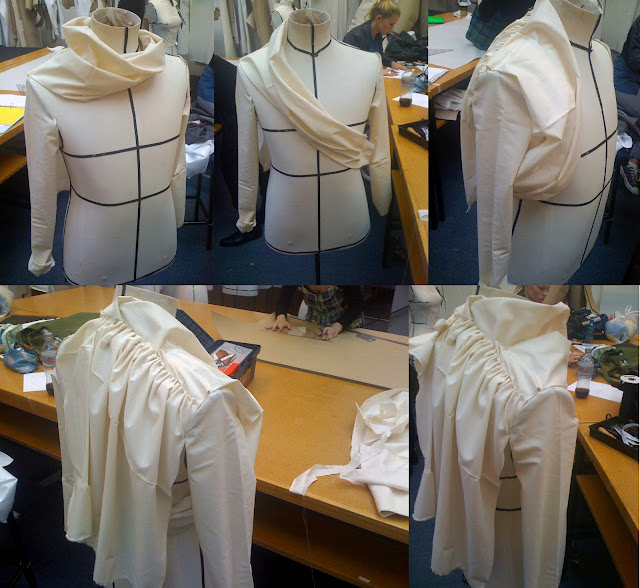This is my friend Pippa. In order to get a stronger idea of what and why people wear specific clothing I asked Pippa questions about what she was wearing today.
What are you wearing? Vintage leather jacket bought for $200 from a store in Paris, leather with insterts 95% Polyester 5% Elastane. Vintage silk shirt 'Van Zon' 100% silk, made in China, given to Pippa from her Mum. Madame Hawk Pants, 70% cotton, 25% Polyester, 5% Elastane, made in China, bought for on sale for $50. Country Road white t shirt, 55% Cotton, 45% Modal. Chuck Taylors, bought for $99.
Why are you wearing these pieces/how long do you intend to keep it/why did you buy it?
- Jacket: Wearing this because its raining a little today and keeps the wind and rain out. It is also one of Pippa's favourite jackets and she wears it a lot. Pippa intends to keep it forever! Bought it because she really liked the style and it reminds her of her trip to Paris.
- Shirt: Wearing because she liked the layering effect. She intends to keep it forever because it was passed down to her through her Mum. Liked the color and 100% shirt which are normally very expensive.
- Pants: Wearing the pants because they are comfortable for university and went with her outfit. Intends to keep these pants until the end of the year (approx). Bought the pants because she already has the same pants in orange and really loved the style, she found these ones on sale.
- T-shirt: Wearing for extra warmth and like the layering. Intends to keep it for as long as it lasts as it is a good basic. Bought it for layering for summer and winter.
- Shoes: These shoes are comfortable and practical for university. Intend to keep them until they wear out, Bought them for everyday wearing - match with anything.
.
I then broke down what I was wearing that day:
Black Pants - Country Road $120
- Made in China, 100% Rayon
- Bought them to wear for the trip to New York last year, they were loose and comfy but didn't look too much like track pants
- Would like to keep the pants for a couple of years
Black/ white Top - Hurricane Jeans $30
- Made in China, 100% cotton
- Bought it because I like that kind of stye, really loose - its actually a boys top, would just be useful
- Would like to keep it just till the end of the year I guess
Blue Cardigan - Kate Sylvester $395
- Made in Chine, 75% Acrylic, 25% Mohair
- Because its verrry warm, I really liked the colour, and its Kate Sylvester so I can wear it to work (because she works at Kate Sylvester)
- Would like to keep it forever! As long as it lasts!
Grey Jacket - Ruby $40 (on sale)
- Made in China, 100% Cotton
- Because it was cheap and I liked he style - I'm a jacket gal!
- Would like to keep it for a while actually, for how cheap I bought it - I still really like it!
- Made in China, 100% Rayon
- Bought them to wear for the trip to New York last year, they were loose and comfy but didn't look too much like track pants
- Would like to keep the pants for a couple of years
Black/ white Top - Hurricane Jeans $30
- Made in China, 100% cotton
- Bought it because I like that kind of stye, really loose - its actually a boys top, would just be useful
- Would like to keep it just till the end of the year I guess
Blue Cardigan - Kate Sylvester $395
- Made in Chine, 75% Acrylic, 25% Mohair
- Because its verrry warm, I really liked the colour, and its Kate Sylvester so I can wear it to work (because she works at Kate Sylvester)
- Would like to keep it forever! As long as it lasts!
Grey Jacket - Ruby $40 (on sale)
- Made in China, 100% Cotton
- Because it was cheap and I liked he style - I'm a jacket gal!
- Would like to keep it for a while actually, for how cheap I bought it - I still really like it!
In conclusion the items that have a story or are more expensive are the one's that Pippa and I intend to keep for longer/ the ones we cherish more. Hence in my collection I need to sustain a balance between price/value and maintaining a story or background







